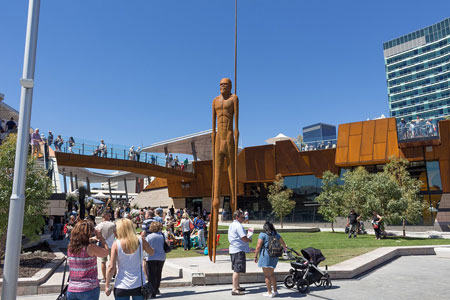Perth Translation Services » Health Medical Translation » Chinese Translator
Chinese Health Medical Translation
We have Chinese translators with experience and background in health and medical translations to complete medical translation requirements, from medical letters and receipts for insurance purposes, to complex medical reports or research papers.
As medical and pharmaceutical Chinese translations is a specialised discipline, not all Chinese translators are able to deliver translations for medical documents. Perth Translation provides medical Chinese translations for documents such as:
- Pre-Clinical Reports
- CMC Documentation
- Clinical Trial Agreements
- Clinical Trial Results
- ICFs
- Investigation Brochures
- Interview Transcripts
- Packaging and Labeling
- Marketing Materials
- Medical Protocols
- Medical Research Papers
- Survey Results
Additional effort in finding the right professional Chinese translator goes a long way in ensuring reliable and consistent quality translations for medical and pharmaceutical documents. Enquire with us today with your project requirement.
Upload your documents for translation
Professional Chinese Translator

Perth Translation provides professional Chinese translation services. You can use the form on this page to upload multiple files for a confirm quote and delivery time. Our Chinese translator is ready to assist with your translation project.
About the Chinese Language
Chinese is a group of related, but in many cases mutually unintelligible, language varieties, forming a branch of the Sino-Tibetan language family. Chinese is spoken by the Han majority and many other ethnic groups in China.
Nearly 1.2 billion people (around 16% of the world's population) speak some form of Chinese as their first language. Standard Chinese (Pǔtōnghuà/Guóyǔ/Huáyǔ) is a standardized form of spoken Chinese based on the Beijing dialect of Mandarin. It is the official language of China and Taiwan, as well as one of the four official languages of Singapore. (More on NAATI Certified Chinese Translation)

Medical Translations For All Major Languages
- Arabic healthcare and medical translation
- Chinese healthcare and medical translation
- Catalan healthcare and medical translation
- Croatian healthcare and medical translation
- Czech healthcare and medical translation
- Estonian healthcare and medical translation
- Dutch healthcare and medical translation
- Finnish healthcare and medical translation
- French healthcare and medical translation
- German healthcare and medical translation
- Greek healthcare and medical translation
- Hindi healthcare and medical translation
- Hungarian healthcare and medical translation
- Indonesian healthcare and medical translation
- Italian healthcare and medical translation
- Japanese healthcare and medical translation
- Korean healthcare and medical translation
- Macedonian healthcare and medical translation
- Malay healthcare and medical translation
- Norwegian healthcare and medical translation
- Persian healthcare and medical translation
- Polish healthcare and medical translation
- Portuguese healthcare and medical translation
- Punjabi healthcare and medical translation
- Romanian healthcare and medical translation
- Russian healthcare and medical translation
- Serbian healthcare and medical translation
- Slovak healthcare and medical translation
- Spanish healthcare and medical translation
- Swedish healthcare and medical translation
- Tagalog healthcare and medical translation
- Thai healthcare and medical translation
- Turkish healthcare and medical translation
- Ukrainian healthcare and medical translation
- Urdu healthcare and medical translation
- Vietnamese healthcare and medical translation
About the Chinese Language
Chinese is a group of related, but in many cases mutually unintelligible, language varieties, forming a branch of the Sino-Tibetan language family. Chinese is spoken by the Han majority and many other ethnic groups in China.
Nearly 1.2 billion people (around 16% of the world's population) speak some form of Chinese as their first language. Standard Chinese (Pǔtōnghuà/Guóyǔ/Huáyǔ) is a standardized form of spoken Chinese based on the Beijing dialect of Mandarin. It is the official language of China and Taiwan, as well as one of the four official languages of Singapore. (More on NAATI Certified Chinese Translation)
Standard Chinese (Pǔtōnghuà/Guóyǔ/Huáyǔ) is a standardized form of spoken Chinese based on the Beijing dialect of Mandarin. It is the official language of China and Taiwan, as well as one of the four official languages of Singapore. It is one of the six official languages of the United Nations. The written form of the standard language (中文; Zhōngwén), based on the logograms known as Chinese characters (汉字/漢字; Hànzì), is shared by literate speakers of otherwise unintelligible dialects.
The earliest Chinese written records are Shang dynasty-era oracle inscriptions, which can be traced back to 1250 BCE. The phonetic categories of Archaic Chinese can be reconstructed from the rhymes of ancient poetry. During the Northern and Southern dynasties period, Middle Chinese went through several sound changes and split into several varieties following prolonged geographic and political separation. Qieyun, a rime dictionary, recorded a compromise between the pronunciations of different regions. The royal courts of the Ming and early Qing dynasties operated using a koiné language (Guanhua) based on Nanjing dialect of Lower Yangtze Mandarin. Standard Chinese was adopted in the 1930s, and is now the official language of both the People's Republic of China and the Republic of China on Taiwan.

